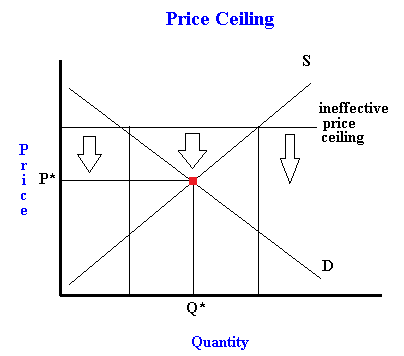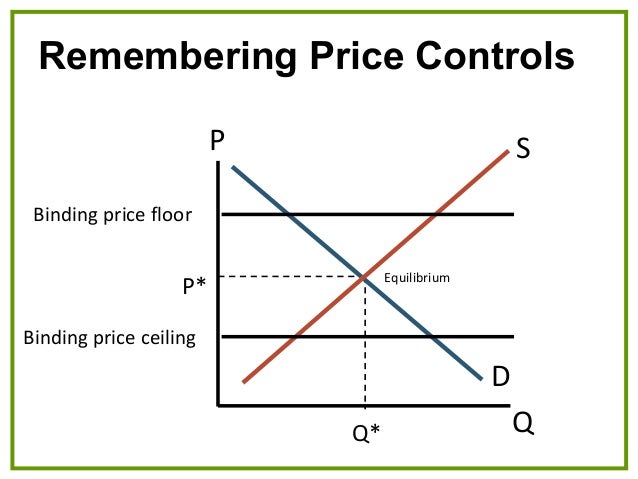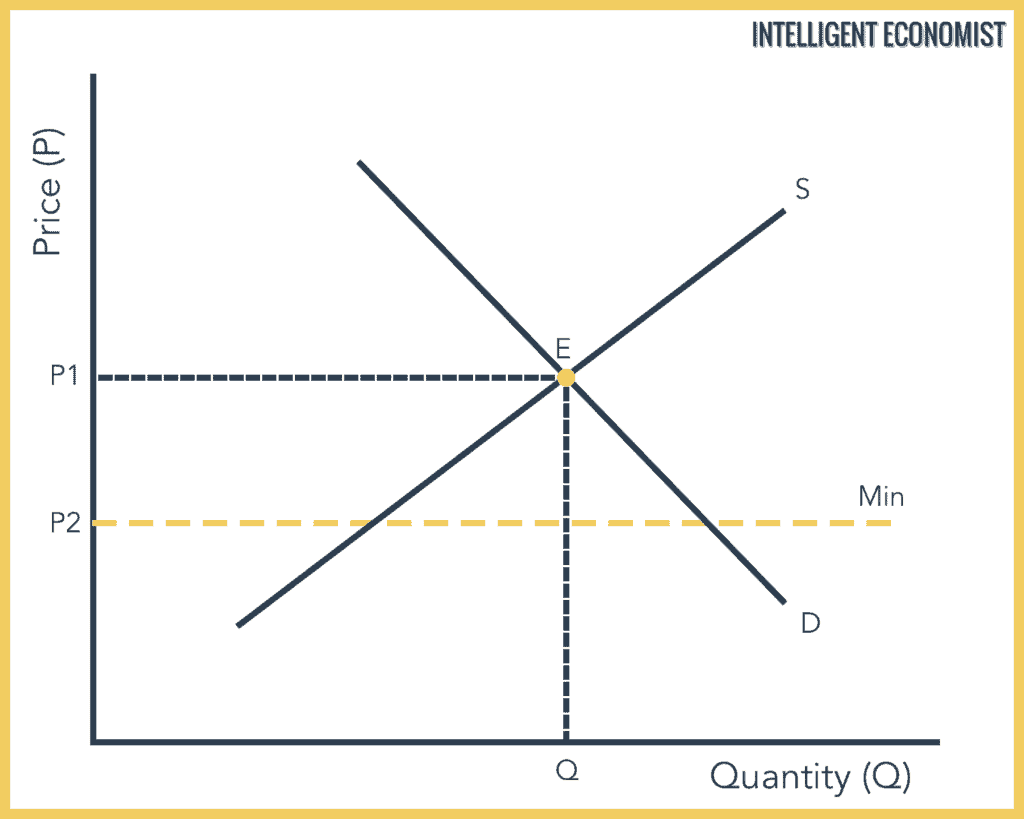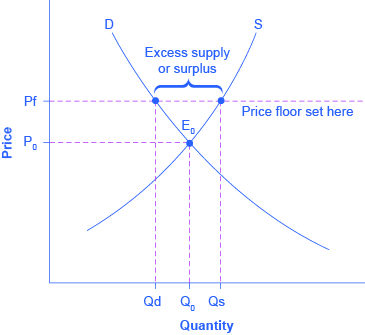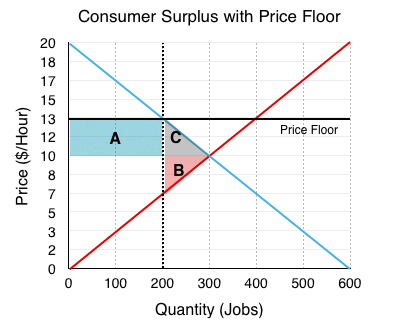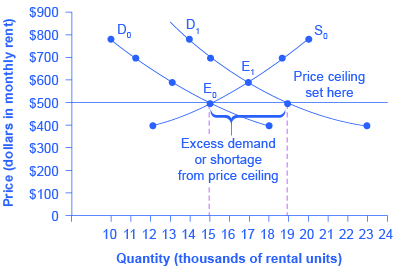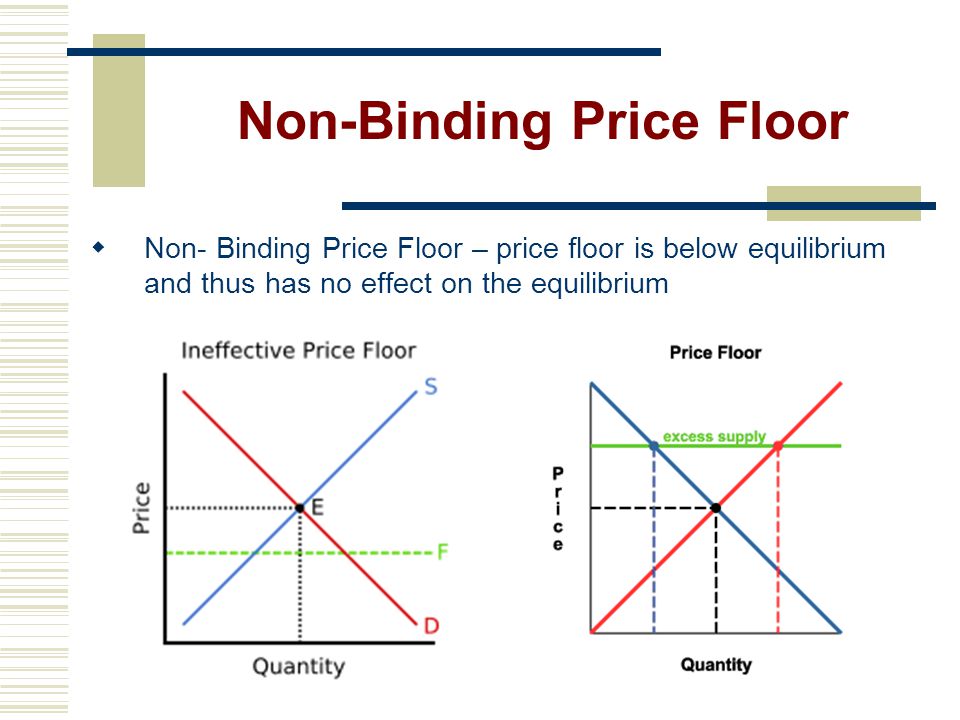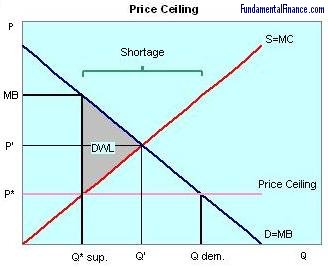Binding Price Floor Will Be Lower Than

At the price p the consumers demand for the commodity equals the producers supply of the commodity.
Binding price floor will be lower than. It might appear that this would increase consumer surplus but that is not necessarily the case. A binding price ceiling is one that is lower than the pareto efficient market price. C equal the price floor. A non binding price floor is one that is lower than the equilibrium market price.
In other words a price floor below equilibrium will not be binding and will have no effect. B higher than the equilibrium price. For example if the equilibrium price for rent was 100 per month and the government set the price ceiling of 80 then this would be called a binding price ceiling because it would force landlords to lower their price from. In other words if you start at a price of say 50 and then keep lowering the price which price do you hit first.
B be higher than the price floor. A lower than the equilibrium price. The equilibrium market price is p and the equilibrium market quantity is q. With a binding price floor the market price will a be lower than the price floor.
A price ceiling is a legal maximum price but a price floor is a legal minimum price and consequently it would leave room for the price to rise to its equilibrium level. It may be confusing to have a floor above something but if you think it through it does make logical sense sense. C the same as the equilibrium price. It has no legal enforcement mechanism.
If a rock wants to fall from an altitude of 50 meters to an altitude of 20 meters than the. Consider the figure below. Since this seems backwards it is easy to get confused about when price ceilings and price floors are binding. If the equilibrium price is 6 and the government says you cannot charge more than 8 the government intervention is meaningless or non binding.
To be binding a price ceiling must be set at a price. D any price ceiling is binding. This means that consumers will be able to purchase the product at a lower price than what would normally be available to them. A binding price ceiling is when the price ceiling that is set by the government is below the prevailing equilibrium price.
Conversely if a company would like to pay employees 10 this will not work because that amount is lower than the price floor in this case it is a binding price floor. If a price floor is not binding then a. Where this gets tricky is that a binding price floor occurs above the equilibrium price. More than one of the above is correct.
The equilibrium price is below the price floor. The equilibrium price is above the price floor. The price cannot go lower than the price floor.
